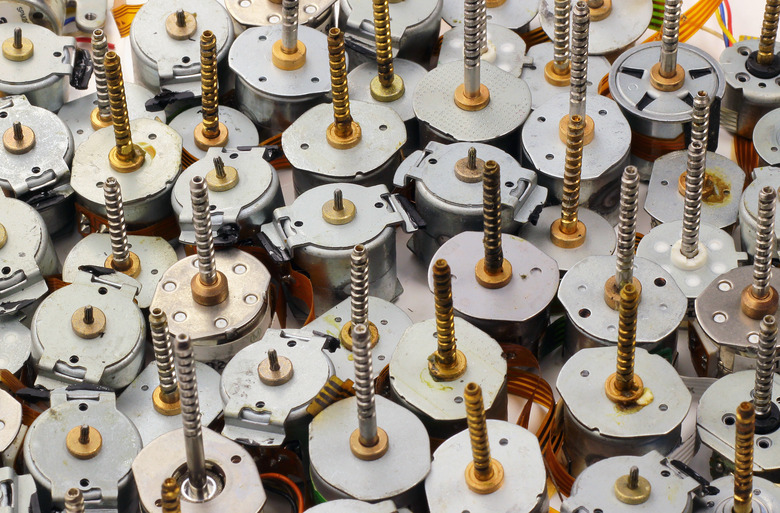How To Determine The RPM On Stepper Motors
A stepper motor, also called a step motor or a stepping motor, is a type of motor that rotates in small, discrete steps rather than continuously, although to the naked eye this kind of rotation is indistinguishable from truly smooth motion at most speeds.
Say you were standing in a field about 200 yards from a fence 100 feet long, and you watched a ball roll smoothly across the top of the fence from one side to the other over a period of three seconds. Now imagine that the ball did not roll smoothly, but instead jumped in increments of 6 inches across the top of the fence, also in three seconds. Your eyes would most likely perceive this stepwise motion as continuous. But in such a scheme, whoever was controlling the stepping ball could, if she wished to, stop it at any one of 200 exact points along the fence.
This is how stepping motors work. They are constructed so that they complete one 360-degree revolution a series of steps. 200 is a common number of steps in these motors, making each step 360/200 = 1.8 degrees. If need be, the mechanism can be stopped at very precise points, like being able to get off a merry-go-round not just "anywhere" but at one of 200 exact locations.
Calcuating RPMs for Stepper Motors
Calcuating RPMs for Stepper Motors
Stepper motors are equipped with drive circuits that emit command pulses at specified rates, rather like the electrical center of your heart. Each pulse moves the motor one step, meaning that "pulses per second" translates to "steps per second." The number of steps required to complete one complete revolution varies, as noted previously.
This means that the number of revolutions per second is:
\(\frac{\text{steps per second}}{\text{steps per revolution}}=\text{revolutions per second}\)
And the the number of revolutions per minute, or RPM, is:
\(60\frac{\text{steps per second}}{\text{steps per revolution}}\)
Example
Example
Say you have a stepper motor with a command pulse rate of 30 per second and a step angle of 0.72 degrees. Calculate the RPM.
First, calculate the number of steps in one 360-degree revolution:
\(\frac{360}{0.72}=500\text{ steps}\)
Then introduce this into the equation above:
\(60\frac{30}{500}=60(0.06)=3.6\text{ RPM}\)
Cite This Article
MLA
Beck, Kevin. "How To Determine The RPM On Stepper Motors" sciencing.com, https://www.sciencing.com/determine-rpm-stepper-motors-10033323/. 14 December 2020.
APA
Beck, Kevin. (2020, December 14). How To Determine The RPM On Stepper Motors. sciencing.com. Retrieved from https://www.sciencing.com/determine-rpm-stepper-motors-10033323/
Chicago
Beck, Kevin. How To Determine The RPM On Stepper Motors last modified March 24, 2022. https://www.sciencing.com/determine-rpm-stepper-motors-10033323/
